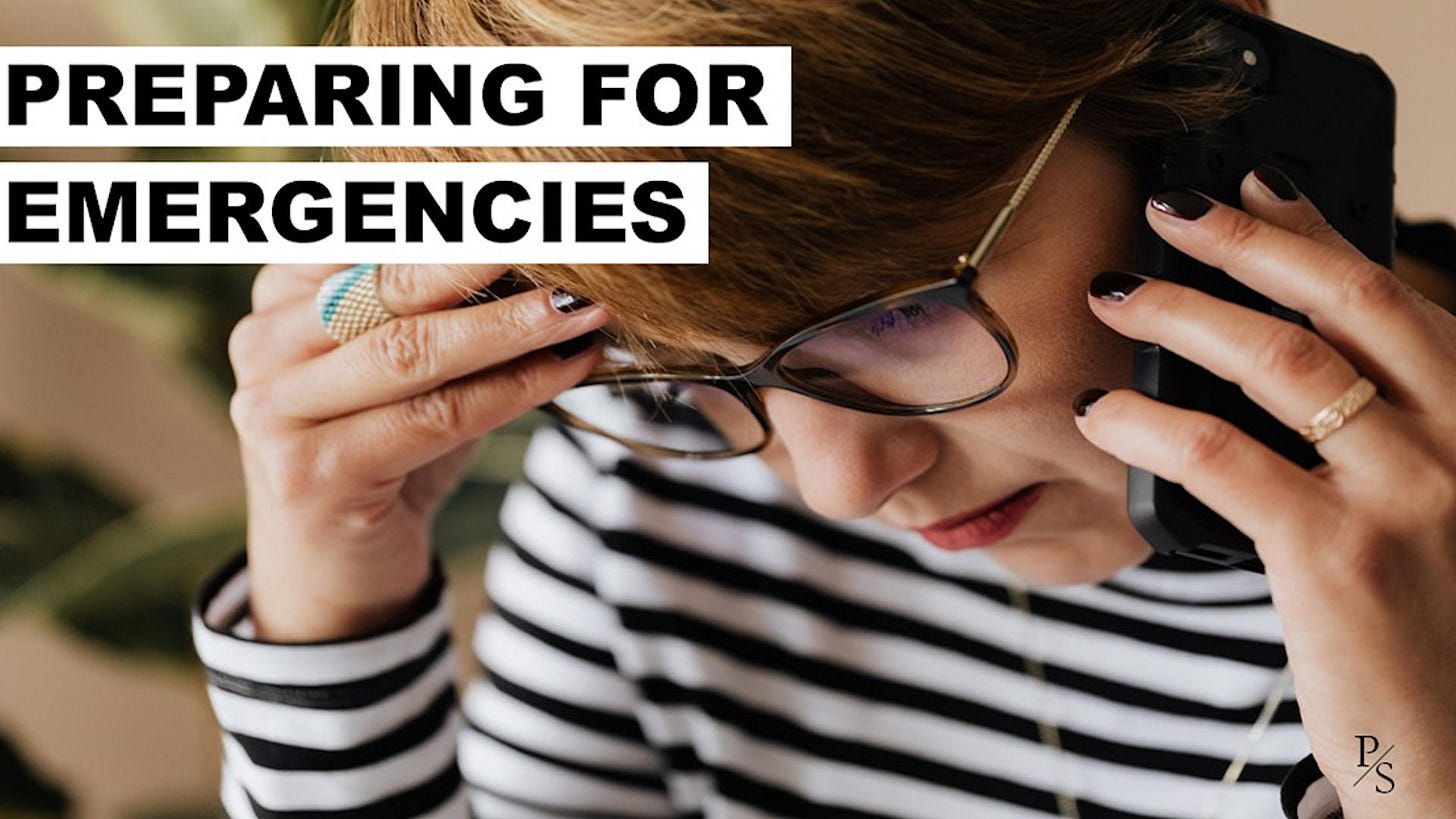Preparing for Emergencies
Preparing for emergencies happened to me twice this week. The first time, I received a call early last Sunday morning. The caller warned me that if I had purchased some soup mix, I should return it to the store for a full refund. He said it contained eggs and if eaten would cause me severe pain. I ignored the call because I hadn’t purchased any soup mix and I went about my day.
Later in the week, I was longing for a dessert so I went to the freezer and pulled out some break and bake cookies. As soon as I started eating the cookies, I became violently ill. I wasn’t sure what to do. I was frightened and toyed with the idea of going to the emergency room to get my stomach pumped but at the time I could hardly leave the bathroom let alone get to my car and then to the emergency room that was about 7 miles away. So, I decided to ride it out. Finally on the second day, things returned to normal.
When it was all over, I realized how grateful I was that even though I didn’t go to the emergency room, I could have gone because I had insurance and I had an emergency fund to cover the costs that my insurance wouldn’t cover. I see studies all the time that show that the average American couldn’t cover a $400 emergency without going into debt and I certainly knew that a visit to the emergency room was going to cost more than that.
What’s an Emergency Fund?
An emergency fund, also known as a cash reserve or a cash cushion is money you set aside for emergencies. I often get questions about how much you should have in an emergency fund and where you should keep it, so here’s my take but keep in mind that everyone's situation is different and these are only examples:
Financial advisors often recommend that you keep 3-6 months of expenses in your emergency fund and that’s a great starting point. I like to ask clients to think of their worst-case scenario and keep enough funds on hand to cover that. For example, if their job is shaky, maybe they need 9-12 months because it could take some time to find another job and the bills will keep coming regardless if they have a job or not.
On the other hand, if their job is secure, if they have other savings, and are generally in good shape, etc. then maybe 3-months is sufficient. The amount will vary from person to person.
Having decided how much to keep in your fund, the next big decision is where to keep it. I recommend that you keep it separate from your checking or other accounts so it doesn’t get accidently spent but is easy to get to when you need it. At the moment, many high-yield savings accounts have good returns so that may be a good option, but there are others as well. Again, the options will vary from person to person and should be well thought out.
However, if you will be keeping more than 3-6 months expenses in your emergency fund, you might want to consider putting the remainder in other investments that will earn a higher return so you can have your money working for you until you need it. This is a strategy that I work with my clients on and we make decisions based on their specific situation. This is one area where you might want to get some help so you don’t take too much risk with your money but still get a return that beats inflation and taxes to maintain your purchasing power. Don’t forget, I offer a free strategy session to discuss questions and concerns. Visit my website to learn more.
The Second Time
The second time preparing for emergencies came up was this morning. I live in Southern California and we all waiting to see what Hurricane Hilary will do. Thankfully, I’m in a good place and I’m prepared with food, water, etc., but I pray that everyone stays safe and secure. Climate change is real people!
Want more of me?




